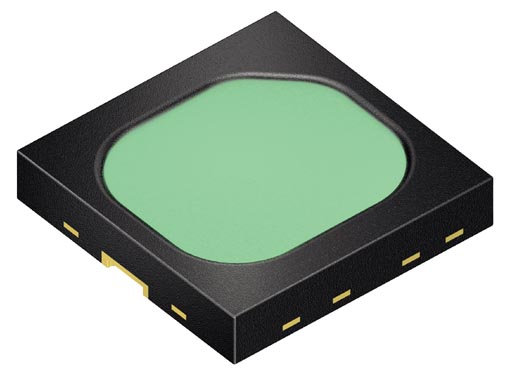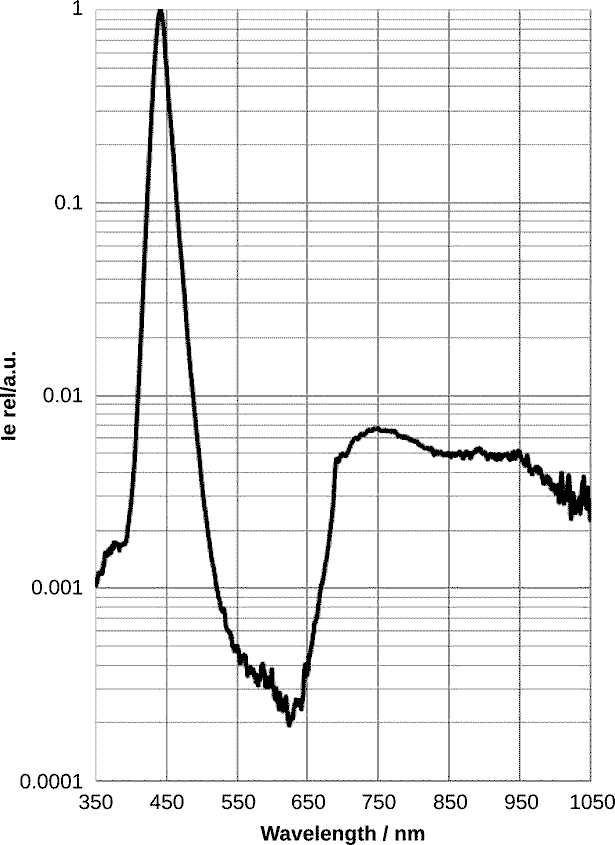New emitter from Osram Opto Semiconductors paves the way for everyday food analytics
Osram Opto Semiconductors is using converter technology for infrared emitters for the first time. The result is an LED that emits broadband infrared light in a wavelength range from 650 to 1,050 nanometers (nm). The main application is near-infrared spectroscopy, for example for analyzing food.

With the SFH 4735 Osram Opto Semiconductors has succeeded in producing the world's first broadband emitting infrared LED. The component is ideally suited as a light source for near-infrared spectroscopy. This has various uses nowadays, including assessing the quality of food. This new development from Osram enables this sensor technology to move into the consumer sector, for example as an add-on for smartphones. The first mini spectrometers have already been showcased, and the new LED means that a compact light source is now available.
Measuring freshness with a smartphone
Infrared spectroscopy uses the characteristic absorption behavior of certain molecular compounds. If a defined spectrum is directed at a sample it is possible to determine the presence and quantity of certain ingredients from the wavelength distribution of the reflected light. This method is used in the food industry and in agriculture, among other sectors. It is possible, for example, to measure the water, fat, carbohydrate, sugar or protein content of foodstuffs. This data provides an indication of freshness, quality or calorie content.
The new infrared LED opens this measurement technique up also for the consumer market. One option would be a compact sensor – like a USB stick – which would be used with an appropriate smartphone app to measure calories, freshness or nutritional content.
First converter for infrared emitters
The basis of the SFH 4735 is a blue 1 mm2 chip in UX:3 technology. Its light is converted into infrared radiation with the aid of a phosphor converter developed specifically for this application. A residual blue component in the light helps users target the area they want to investigate. The emission spectrum of the SFH 4735 has a homogeneous spectral distribution in the infrared range. The chip is mounted in the proven and compact Oslon Black Flat package which is characterized in particular by good thermal resistance.
Food analytics supplements bio monitoring
Compact units for spectroscopic chemical analyses open up a completely new range of applications in consumer electronics. Experts expect that it will be possible in the near future to integrate spectrometers directly in mobile devices. The new technology is a natural extension of bio monitoring, in other words the trend for measuring various vital signs such as pulse rate and calorie consumption. A smartphone spectrometer will enable users to monitor the food they eat in a similar manner. Medicines can also be checked in the same way.
“Future applications are also of particular interest”, said Udo Jansen, Product Marketing Manager for Infrared at Osram Opto Semiconductors. “It is conceivable that the emission range can be extended to include wavelengths up to 2,000 nanometers, in other words into the middle infrared spectral range. This will allow more precise and detailed measurements and will open up new options for everyday analyses of certain environmental parameters such as air quality.”
 |
| Relative Spectral Emission. |
Technical data SFH 4735
- Wavelength: 650-1050 nm
- Spectral output:
- 60 µW @ 750 nm
- 30 µW @ 980 nm
- Dimensions: 3.75 × 3.75 × 0.7 mm
- Chip surface 1 mm2
